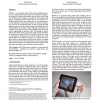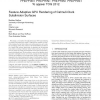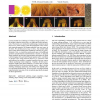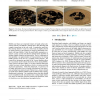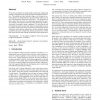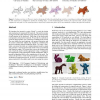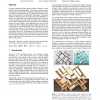TOG
2012
12 years 5 months ago
2012
This paper investigates “Schelling points” on 3D meshes, feature points selected by people in a pure coordination game due to their salience. To collect data for this investig...
TOG
2012
12 years 5 months ago
2012
We present a simple algorithm to compute continuous penalty forces to determine collision response between rigid and deformable models bounded by triangle meshes. Our algorithm co...
TOG
2012
12 years 5 months ago
2012
TOG
2012
12 years 5 months ago
2012
TOG
2012
12 years 5 months ago
2012
Current methods for combining two different images produce visible artifacts when the sources have very different textures and structures. We present a new method for synthesizing...
TOG
2012
12 years 5 months ago
2012
Bubbles and foams are important features of liquid surface phenomena, but they are difficult to animate due to their thin films and complex interactions in the real world. In par...
TOG
2012
12 years 5 months ago
2012
We present a semi-automated technique for selectively deanimating video to remove the large-scale motions of one or more objects so that other motions are easier to see. The user ...
TOG
2012
12 years 5 months ago
2012
We present a technique for automatically synthesizing walking and running controllers for physically-simulated 3D humanoid characters. The sagittal hip, knee, and ankle degrees-of...
TOG
2012
12 years 5 months ago
2012
We introduce the interactive system “Beady” to assist the design and construction of customized 3D beadwork. The user first creates a polygonal mesh model called the design m...
TOG
2012
12 years 5 months ago
2012
Geometric modeling and the physical validity of shapes are traditionally considered independently. This makes creating aesthetically pleasing yet physically valid models challengi...

